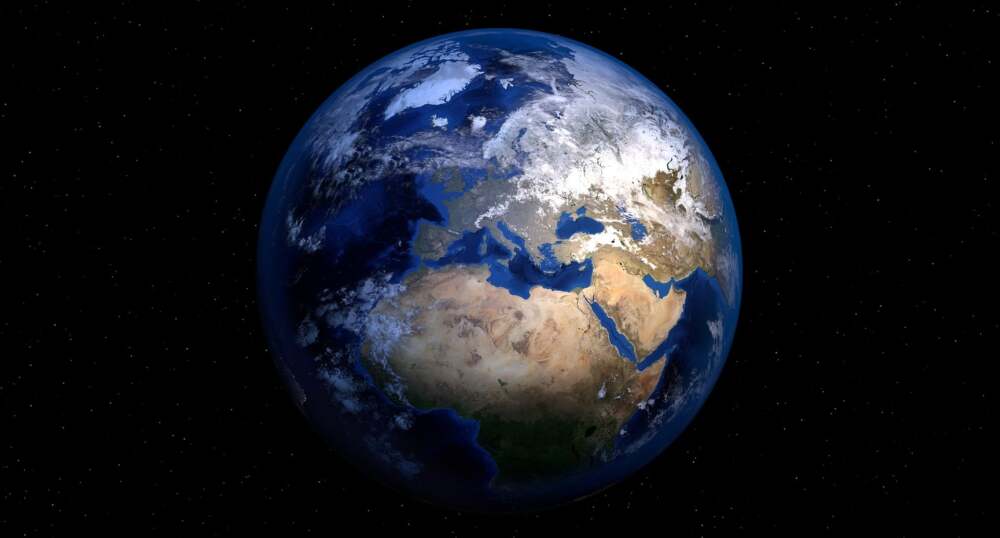The world has entered an alarming new phase in the climate crisis. Recent global measurements show that carbon dioxide levels in the atmosphere have reached record highs, while the Earth’s natural ability to absorb that carbon — through forests, oceans, and soil — is beginning to falter.
This combination of rising emissions and weakening natural absorption has scientists warning that humanity is edging dangerously close to the limits of the planet’s resilience. Without dramatic action, the goal of keeping global warming below 1.5°C may soon be out of reach.
The Alarming Surge in Carbon Levels
According to data compiled by international climate monitoring networks, the global concentration of carbon dioxide in 2024 increased faster than at any point in recorded history. The rise exceeded expectations even in a year marked by moderate El Niño conditions, which typically amplify emissions.
For decades, roughly half of the carbon dioxide released by human activity — from burning fossil fuels, deforestation, and industrial production — has been absorbed by the natural environment. Forests take up a large portion, while oceans absorb much of the rest. However, in the last few years, those natural “carbon sinks” have shown signs of slowing down.
Researchers note that the share of carbon remaining in the atmosphere — known as the airborne fraction — is increasing. In simple terms, the planet is keeping less and less of our pollution out of the air.
Why Nature’s Carbon Absorbers Are Failing
Several factors are converging to weaken the Earth’s natural ability to regulate its own atmosphere:
- Forest degradation: Major forest systems — from the Amazon to central Africa and Southeast Asia — are under immense pressure. Deforestation, rising temperatures, and recurring droughts are reducing their carbon absorption capacity. In some areas, forests that once captured CO₂ are now emitting more than they store due to fires and decay.
- Ocean saturation: The oceans have absorbed about a quarter of all human-made carbon emissions, but that capacity is waning. Warmer waters hold less CO₂, and increasing acidity disrupts marine ecosystems, particularly plankton, which play a key role in carbon uptake.
- Soil disruption: Agriculture and urban expansion have damaged many of the world’s richest soils. Peatlands and tundra, which store vast quantities of carbon, are thawing or drying out, releasing greenhouse gases instead of sequestering them.
- Climate feedback loops: As the planet warms, the processes that once kept carbon in check begin to work in reverse. Droughts, wildfires, and heatwaves further degrade ecosystems, releasing even more CO₂ — creating a self-reinforcing cycle.
The Consequences of Weakening Carbon Sinks
The implications of this shift are profound. The weaker the Earth’s carbon sinks become, the harder it will be to stabilize the climate — even if countries drastically reduce emissions.
A higher airborne fraction means that more carbon stays in the atmosphere for longer, trapping more heat and accelerating global warming. This increases the likelihood of surpassing key tipping points, such as the collapse of polar ice sheets or the dieback of major forests.
Already, scientists report stronger heat extremes, longer droughts, and unprecedented weather volatility in many parts of the world. The rising cost of climate disasters — from floods to wildfires — is placing heavy burdens on national economies and insurance systems.
A Shrinking Carbon Budget
Climate researchers have long warned of a finite “carbon budget” — the total amount of CO₂ humanity can emit before crossing dangerous warming thresholds. New analyses suggest that this budget is shrinking faster than expected because natural absorption is no longer keeping pace with emissions.
At current rates, the world could exceed the 1.5°C threshold within the next decade, and the 2°C mark not long after. Each fraction of a degree of warming brings severe risks, including sea-level rise, biodiversity collapse, and food insecurity.
What’s Driving the Emissions Spike
Even as renewable energy capacity expands, global emissions continue to rise. A post-pandemic rebound in manufacturing, increased air travel, and expanding energy demand in developing economies have all contributed.
Coal use remains stubbornly high in several regions, while oil and gas consumption has surged due to economic recovery and geopolitical disruptions. In parallel, rapid urbanization and deforestation continue to erase vital carbon-absorbing landscapes.
A Dual Challenge: Cutting Emissions and Strengthening Nature
Experts emphasize that climate strategies must now focus on two equally urgent fronts: cutting emissions and reinforcing natural carbon sinks. While most global climate policies target reducing fossil fuel use, less attention has been given to the ecosystems that keep carbon levels in check.
Investment in nature-based solutions — such as reforestation, wetland restoration, and regenerative agriculture — could play a decisive role in balancing the global carbon cycle. These efforts not only store carbon but also support biodiversity, water regulation, and local livelihoods.
At the same time, new technologies like carbon capture and storage (CCS) and direct air capture are being developed to remove carbon from the atmosphere. However, these remain expensive and unproven at scale.
The Role of Governments and Industry
Many experts argue that governments and corporations must move beyond pledges and focus on tangible action. Industrial sectors — particularly energy, cement, steel, and transport — remain the largest emitters, and decarbonizing them is essential.
Several nations have set “net-zero” targets for 2050 or earlier, but without stronger short-term measures, those goals risk becoming meaningless. Subsidies for fossil fuels still far outweigh investments in renewable energy in many parts of the world.
International cooperation is also key. Carbon doesn’t respect borders, and without global coordination, progress in one region can be offset by backsliding elsewhere.
Hope Amid the Crisis
Despite the sobering data, scientists say it is still possible to turn the tide. Rapid deployment of clean energy, widespread electrification, protection of forests, and a shift toward sustainable land use could significantly slow the rise of atmospheric carbon.
Public awareness and technological innovation are at their highest levels in history. Many companies are now incorporating climate risk into financial planning, and citizens worldwide are demanding stronger environmental accountability.
What’s needed now is speed and scale — actions that match the magnitude of the threat.
A Closing Warning
The Earth is sending unmistakable signals: record heat, melting glaciers, intensifying storms, and oceans under stress. These are not isolated events — they are symptoms of a planet straining under the weight of human activity.
If natural carbon sinks continue to weaken, the challenge of stabilizing the climate will grow exponentially harder. The longer the world delays, the greater the cost — both human and environmental.
The question is no longer whether climate change is real, but whether humanity will act in time to protect the systems that make life on Earth possible.
















Leave a Reply